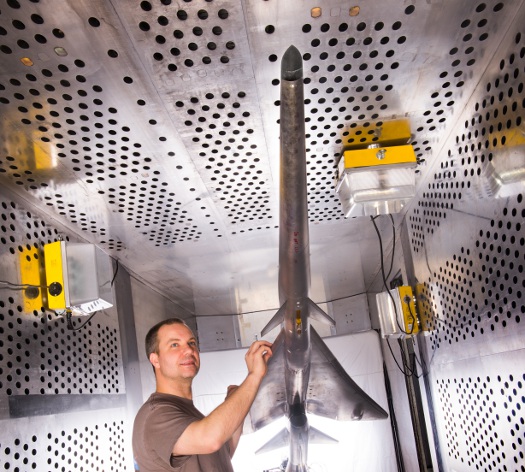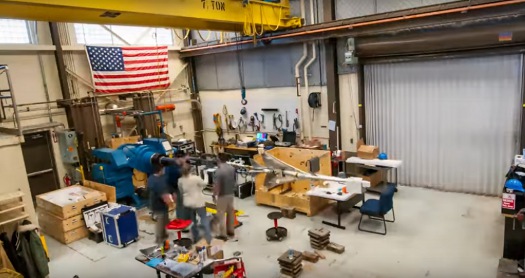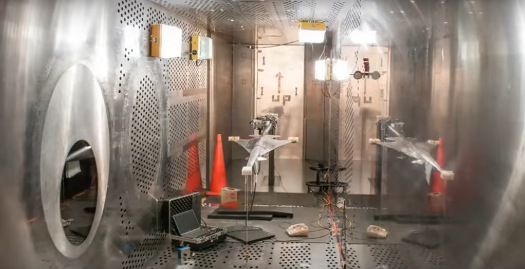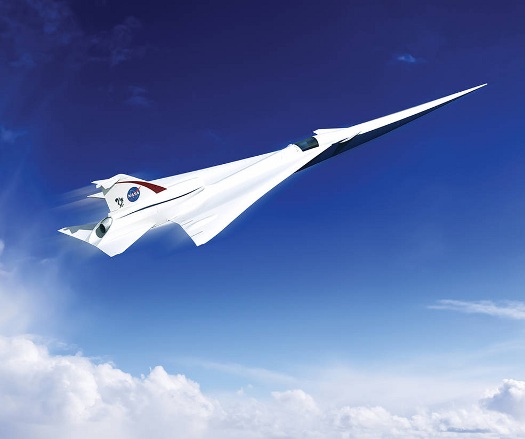 |
| March 07, 2017 | Volume 13 Issue 09 |
Designfax weekly eMagazine
Archives
Partners
Manufacturing Center
Product Spotlight
Modern Applications News
Metalworking Ideas For
Today's Job Shops
Tooling and Production
Strategies for large
metalworking plants
Wings:
Lockheed Martin's X-plane design for quieter supersonic jet takes on NASA wind tunnel testing

Mechanical technician Dan Pitts prepares a scale model of Lockheed Martin's Quiet Supersonic Technology (QueSST) X-plane preliminary design for its first high-speed wind tunnel tests at NASA's Glenn Research Center in Cleveland. [Credits: NASA]
Supersonic passenger airplanes are another step closer to reality as NASA and Lockheed Martin begin the first high-speed wind tunnel tests for the Quiet Supersonic Technology (QueSST) X-plane preliminary design at NASA's Glenn Research Center in Cleveland.
The agency is testing a 9 percent scale model of Lockheed Martin's X-plane design in Glenn's 8-ft x 6-ft Supersonic Wind Tunnel. During the course of eight weeks, engineers will expose the model to wind speeds ranging from Mach 0.3 to Mach 1.6 (approximately 150 to 950 mph) to understand the aerodynamics of the X-plane design as well as aspects of the propulsion system. NASA expects the QueSST X-plane to pave the way for supersonic flight over land in the not-too-distant future.
"We'll be measuring the lift, drag, and side forces on the model at different angles of attack to verify that it performs as expected," says aerospace engineer Ray Castner, who leads propulsion testing for NASA's QueSST effort. "We also want to make sure the air flows smoothly into the engine under all operating conditions."

Screenshot of prep area at NASA's Glenn Research Center. [Credits: NASA]
The Glenn wind tunnel is uniquely suited for the test because of its size and ability to create a wide range of wind speeds.
"We need to see how the design performs from just after takeoff, up to cruising at supersonic speed, back to the start of the landing approach," says David Stark, the facility manager. "The 8-by-6-foot supersonic wind tunnel allows us to test that sweet spot range of speeds all in one wind tunnel."

Screenshot of NASA wind tunnel setup for the QueSST X-plane. [Credits: NASA]
Recent research has shown it is possible for a supersonic airplane to be shaped in such a way that the shock waves it forms when flying faster than the speed of sound can generate a sound at ground level so quiet it will hardly will be noticed by the public, if at all.
"Our unique aircraft design is shaped to separate the shocks and expansions associated with supersonic flight, dramatically reducing the aircraft's loudness," says Peter Iosifidis, QueSST program manager at Lockheed Martin Skunk Works. "Our design reduces the airplane's noise signature to more of a ‘heartbeat' instead of the traditional sonic boom that's associated with current supersonic aircraft in flight today."
VIDEO: In this time-lapse sequence, engineers assemble a scale model of the design and install it in Glenn's Supersonic Wind Tunnel. Over an eight-week period, engineers will expose the model to wind speeds ranging from Mach 0.3 to 1.6. [Credits: NASA]
According to Dave Richwine, NASA's QueSST preliminary design project manager, "This test is an important step along the path to the development of an X-plane that will be a key capability for the collection of community response data required to change the rules for supersonic overland flight."
NASA awarded Lockheed Martin a contract in February 2016 for the preliminary design of a supersonic X-plane flight demonstrator. This design phase has matured the details of the aircraft shape, performance, and flight systems. Wind tunnel testing and analysis is expected to continue until mid-2017. Assuming funding is approved, the agency expects to compete and award another contract for the final design, fabrication, and testing of the low-boom flight demonstration aircraft.

This is an artist's concept of a possible Low Boom Flight Demonstration Quiet Supersonic Transport (QueSST) X-plane design. The award of a preliminary design contract is the first step toward the possible return of supersonic passenger travel -- but this time quieter and more affordable. [Credits: Lockheed Martin]
The QueSST design is one of a series of X-planes envisioned in NASA's New Aviation Horizons (NAH) initiative, which aims to reduce fuel use, emissions, and noise through innovations in aircraft design that depart from the conventional tube-and-wing aircraft shape. The New Aviation Horizons X-planes final working prototypes will typically be about half-scale of a production aircraft and are likely to be piloted. The design and build phases for the NAH aircraft will be staggered over several years, with the low-boom flight demonstrator starting its flight campaign around 2020 and other NAH X-planes following in subsequent years, depending on funding.
Starting with the 2016 contract award, Lockheed Martin was scheduled to receive about $20 million over 17 months for the QueSST preliminary design work. The Lockheed Martin team for this phase includes subcontractors GE Aviation of Cincinnati and Tri Models Inc. of Huntington Beach, CA.
For more information about QueSST, go to:
www.lockheedmartin.com/us/products/QueSST0.html.
For more information about NASA's aeronautics research, go to:
www.nasa.gov/aero.
Source: NASA
Published March 2017
Rate this article
View our terms of use and privacy policy
